In The National Culinary Review for November/December, Laura Taxel discusses the Science of Taste. Here are a few snippets I thought were interesting. What do you think? Interesting? ![]() or boring?
or boring? ![]()
-We typically eat and drink items in combination which can effect perception. We become temporarily less sensitive to a dominant compound as we consume it which is why a pleasant tasting dry wine suddenly becomes sour after a few bites of a sugary dessert or a vinaigrette dressing on our salad inhibits our ability to detect tart notes in a wine making it seem flat.
-There are four common tastes which are most familiar: sweet, salty, sour, and bitter. In recent years, researchers have added a fifth called umami. Umami is described as meatiness or savoriness.
-Humans have about 10,000 taste buds and not everybody is the same. Some folk have more densely packed papillae (taste receptors) . In addition, there are natural differences in our gene structure which is why some people may think a food is bitter and others might think it’s simply wonderful.
-Remember the “map of the tongue”?
Tip = sweetness. Sides = sour and salty. Back of the tongue = bitterness. These have been discredited. There is no proof that taste buds can discern one or multiple taste qualities. Research has proven that all areas of the tongue recognize each taste with some areas being more responsive to certain compounds than others.
-Umami acts in synergy with other compounds and makes them seem fuller, rounder and more dimensional on the palate proving tastes can work in harmony. There is also the opposite phenomenon called mixture suppression such as when salt impedes the perception of sourness so consuming the two at the same time decreases awareness of both to achieve balance. Example: Margarita served in a salt rimmed glass. Salt will also suppress bitterness which shifts perception to detect any sweetness present. Example: The wonderful combination of feta cheese and watermelon OR salty cheese with a big red cabernet wine will bring out the natural sweetness of the wine.
-Another important feature of tasting science is that all senses help us enjoy or not enjoy a food. Aromas are important for the brain. Pinch the nose or if it’s blocked by cold or allergies, we can recognize sweetness but not distinct flavor. Example: We taste the sweet hard candy in our mouth but can’t tell if it’s strawberry or cherry. Why? Because what we believe is taste is actually SMELL.
-Feel is another sense we need to enjoy the food we eat. Temperature, texture, warmth, coolness, carbonation. Mario Batali suggests that describing something as “crispy” sells more dishes than a “barrage of adjectives”.
-Desirable irritants: the spicy burn of a jalapeno, mustard, wasabi, horseradish, cinnamon.
-Visual cues, memories, culture all play a role in our decision whether we enjoy or dislike a food. Familiarity is what we all feel the most comfortable with when deciding whether we like or dislike a food.
Some Tasty Tricks by Steve Schimoler, chef/owner of Crop Bistro & Bar in Cleveland OH:
With something else to think about, people won’t know what’s missing.
1. Peach pie requires no added sweeteners of any kind. Roast the fruit until it caramelizes and capture the juices. Season with purple basil.
2. Apple-Rhubarb crisp. Add curry. Toasted fenugreek which has maple like notes and caramel aromatics is a stand in for syrup in a maple crème brulee. This reduces the sugar in the recipe by about 75%.
3. To make a lite ice cream seem rich combine 2% milk with a thickening agent, habanero powder and a mentholated cold sensate he obtains from T.Hasegawa USA in Cerritos, CA and David Michael & Co in Philadelphia, PA. The hot-cold combination grabs the attention so the lower butterfat level and sugar goes unnoticed. Using less fat makes flavors more prominent.
4. Use less salt by adding acidic ingredients such as lemon juice, vinegar and sherry.
Do you have a favorite flavor / taste trick?
What’s your favorite flavor combination?
Here is one of my favorite flavor combos: BAKED OATMEAL
This recipe was baked with breakfast in mind. It included all the good ingredient usually eaten for breakfast but in one easy to grab handful.
Cut into 10 squares.
- 2 cups rolled oats
- 1/3 cup chopped walnuts
- 1/3 cup raisin concentrate (or you can use maple syrup or sugar if you prefer)
- 1 1/2 tsp. cinnamon
- 1/2 tsp. salt
- 1/2 cup 2% milk + 1/2 cup water
- 1 egg
- 2 tsp. vanilla
- 1 ripe banana
- 1/2 lb. sliced small strawberries
- 1 peeled, cored and small cubed apple
Preheat oven to 375 F. Lightly spray a baking dish with non stick spray.
In a large mixing bowl, beat the oats, walnuts, raisin concentrate (or whatever you’re using), cinnamon, salt, egg, vanilla, and banana.
Gently stir in the strawberries and apple.
Pour into prepared dish and bake for 40 – 45 minutes.
To serve, drizzle with more maple syrup or, I personally enjoy, a scoop of Greek yogurt with a fresh strawberry on the side.
Taste science, food technology…it all boils down to one thing: We like what we like that’s what a chef has to work with.

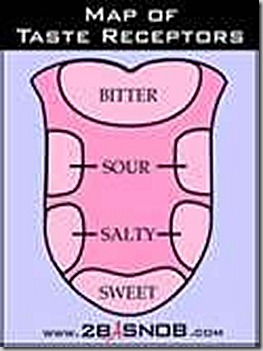

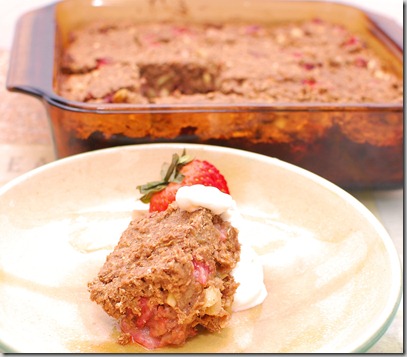
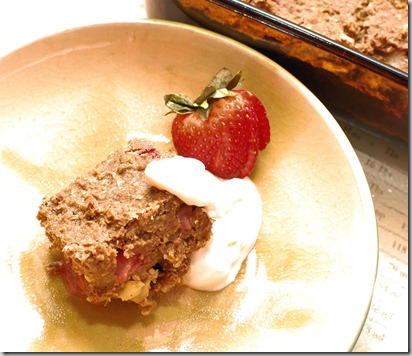
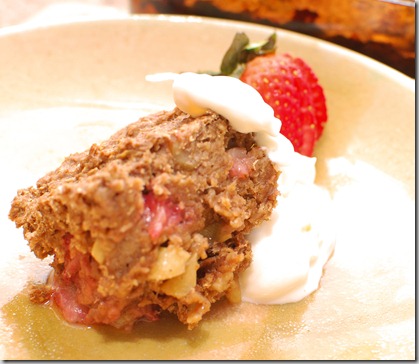
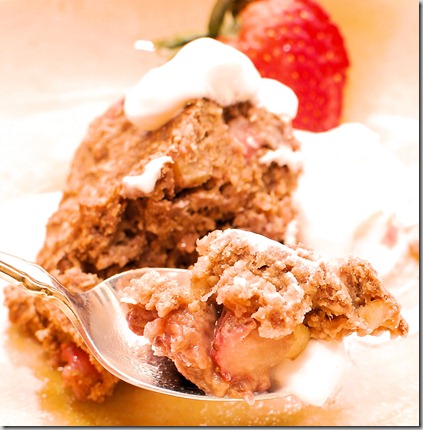

I do find that type of info to be fascinating and I love the tricks experiences cooks/chefs use! Purple basil? I’ve never heard of it and wouldn’t think to put regular basil in a peach pie!
My mom makes a wonderful Amish baked oatmeal with dried cherries. Baked oatmeal is serious winter comfort food!!
That is fascinating my friend what awesome info 😀
And beautiful baked oatmeal!
Cheers
CCU
Love this post – Food science is fascinating 🙂